Wood floor gaps and cracks. Causes and cures
Moisture imbalances and moisture loss in wood flooring can result in several issues. Gaps and cracks between boards are a result of dimensional change from moisture loss. Understanding proper service and maintenance procedures will help prevent this issue. In this post, we discuss all contributing factors in detail as well as proper forms of remedial action.
The Water Equation
Wood flooring has an optimal living environment in order to remain dimensionally stable. The general consensus recommends 60-80 Fahrenheit and 30-50% average interior relative humidity (RH) for a wood floor. Manufacturers specify these ranges within installation guidelines as a requisite to retain product warranties. The average annual RH in your typical Colorado home is below 30%. Therefore, it can be essential to add supplemental moisture to a home occasionally.
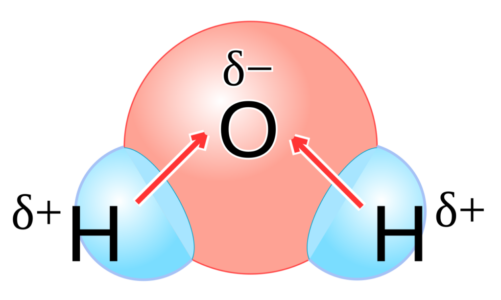
Water Molecule
Psychometrics
The study of how moisture distribution within a space is affected by altitude and temperature is called psychometrics. As a general rule, as air cools it loses its ability to retain moisture. This can be problematic in the winter depending on how a home is heated.
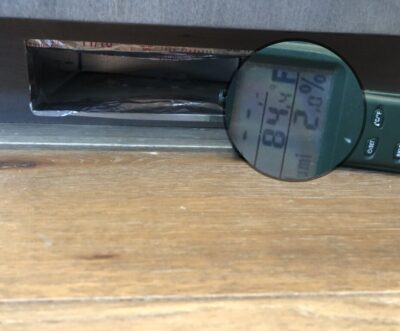
HVAC systems
Heating a home can happen via many systems, but the most common are:
- forced air units
- In floor radiant heating
- baseboard radiant heating
- wood/pellet fireplaces
Each system has a different effect on the air within a home. Supplementing moisture requires differing approaches.
Fastening
How well a wood floor is fastened can impact the dimensional stability. We explain that in another post to keep on topic in this article.
In Unit Humidification
Forced air heaters will generally reduce the RH of a home. Adding a humidifier to your HVAC unit can offset the issue. These systems can be retrofitted by a qualified industry professional usually within one day and will help prevent winter heating gaps in your floor.
Supplemental Room Humidifiers
A variety of humidifiers are available that can be installed within bedrooms. These small units are usually incapable of providing adequate moisture for an entire living space. There are wall mounted RH units that can be added to various sections of the home. An example is this model by Aprilaire.
Secondary Factors
Effects of Moisture Loss
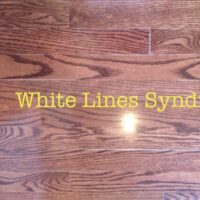
Adhesion Loss
Flooring that experiences dimensional change can also experience adhesion loss of coatings. After the coating bond fails the result can be chipping, peeling, and premature coatings wear.
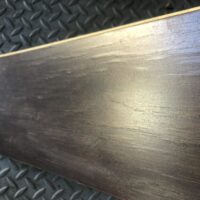
Face checking
This phenomenon can occur in engineered hardwood floors. As the board experiences moisture loss, the upper veneer can lose adhesion or experience fiber shear.
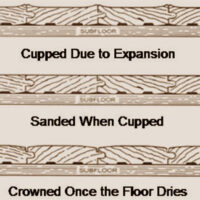
Crowning
When a wood floor loses moisture shortly after being sanded, the result can be crowning. Crowning can be avoided by acclimating flooring materials adequately prior to installation or allowing adequate dry times following moisture events.
Flooring is not subjective
No matter how well you attend to other parts when constructing or maintaining a home, neglecting HVAC and psychometrics will catch up to a floor over time. Preventing gaps before they appear is the best strategy, as wood flooring tends to lose moisture more quickly than it re-absorbs it.
